Rich Handley’s exploration into the Forbidden Zone of comics publishing — those great Apes comics that never were — continues with Malibu Graphics’ ’90s run — and some unpublished art!
Yesterday’s look at Marvel can be found here.
By RICH HANDLEY
Manhunt on the Planet of the Apes
In the 1990s, Malibu Graphics’ Adventure Comics imprint picked up the Planet of the Apes license, releasing both an ongoing title set a century after Caesar’s death, and also a string of miniseries and one-shot specials set in various eras. One such special was “Sins of the Father,” by the late Mike Valerio and artist Mitch Byrd. Originally titled “Murder on the Planet of the Apes,” “Sins” revealed a hard lesson learned by a young Dr. Zaius regarding integrity, justice and the importance of preserving ape society, no matter the cost.
“Sins of the Father” was not the only Planet of the Apes story Valerio proposed. “We’re going back 17 or so years,” the author told me back in late 2009, “so my memory’s a little fuzzy, but I know that I pitched one other Apes idea to [editor] Tom Mason at Malibu. I know that he and I talked about it some, but never wrote anything down, aside from some brainstorming e-mails. And I don’t recall if we were talking about this as another comic book special or taking it directly to 20th Century Fox with it as a new movie pitch (though I seem to recall Tom suggesting that).”
As Valerio described it, “Manhunt on the Planet of the Apes” would have been both a sequel to Escape and a “prequel/continuation” of Planet and Beneath. The story, he says, would have started after the deaths of Zira, Cornelius and Hasslein. “Knowing that the Earth is doomed because Taylor will destroy it in the future,” Valerio recalled, “the U.S. government and military create Operation: Hasslein, a shadow program dedicated to developing a time-travel device that will send an assassin into the future sometime before Taylor’s arrival.” The assassin’s objective: to wait for Taylor to arrive, then track him down and kill him before he meets Brent and detonates the Doomsday Bomb.
According to Valerio, Mason liked the idea, but as the two began developing it further, they soon realized there were “all kinds of plot-logic problems inherent to the time travel set-up.” For instance, he said, “If you’re going to send somebody into the future to kill Taylor, why wait until Taylor arrives when you could kill him before he ever goes on his mission? Or, if you do have a time machine, why not send that assassin to kill Caesar before he ever leads the revolt? Or to kill Zira before she can give birth to Milo/Caesar?” In addition, it’s unlikely anyone would know it was Taylor who triggered the detonation.
Such “plot complications and conundrums” began to overwhelm them, Valerio admitted, which meant “either the core idea was dumb, or we were too dumb to figure out how to make it work.” What’s more, he added, there were too many similarities to the Terminator films, as well as to the Alien movies once they decided to make the assassin female.
“The more we tried to change the idea to make it fresh,” Valerio said, “the more unworkable it became. Ultimately, we just abandoned the idea and walked away.” It’s interesting to note that despite this, Malibu had already explored a similar premise in Charles Marshall’s Ape City miniseries — and that the same logic problems applied. Not having read Ape City, however, Valerio said he was unaware of the similarities.
Ape Nation
The four-issue Ape Nation miniseries featured a crossover between Planet of the Apes and TV’s “Alien Nation,” written by Marshall and illustrated by M.C. Wyman and Terry Pallot, with covers by Dave Dorman, David de Vries and Peter Hsu. Several years ago, a page of artwork cut from that series was discovered, featuring a touching scene between heartbroken ape scout Heston (named, obviously, after actor Charlton Heston) and a Tenctonese woman named Elysa. The page was certainly not crucial to the story, but its removal is unfortunate, as it was quite effective.
Back From the Future
Marshall served as regular writer on Malibu’s monthly Apes series and, like Valerio and Marvel’s Doug Moench, also had story ideas that remained unrealized. “I don’t have a lot of specific memories about those last few issues,” Marshall says, regarding the final four-parter in which the spirit of Governor Breck kills many of the original characters created over the course of the writer’s tenure. “Obviously, it was an attempt to ‘clean house.’… I think it was also an attempt to leave the POTA world the way I found it, without a lot of unnecessary clutter. We knew the series was going away, and that I was moving on.”
Although Marshall recalls no “big themes or ideas left for the characters who didn’t bite it at the end of the series,” he does cite two stories he “fleshed out and never got a chance to tell.” The first, titled “Back from the Future,” featured JoJo and Frito, two comedic, dimwitted gorilla guards that served as Planet of the Apes’ answer to Laurel and Hardy.
Marshall describes the goofy gorillas’ unpublished adventure as “a farcical time-travel piece that probably would have gone God-knows-where.” He cites the brawling best friends as his favorite characters from his work on the series, stating, “Those two knuckleheads were the easiest characters to write that I ever used; I’d just clear my head and let them go wherever they wanted. It was always pretty ridiculous stuff, but it never ceased to entertain me, and I figured I could be sure I was at least entertaining one person.”
The Most Dangerous Animal
The other tale, Marshall says, was an arc he’d dubbed “The Most Dangerous Animal” — a pun on Richard Connell’s short story “The Most Dangerous Game” — that he recalls being “an ambitious time-travel story where a group of humans (possibly government) discover that the world has been lost to the apes and stage a huge attack that’s actually a Trojan horse for an attempt to destroy all apekind with a man-made plague.”
In the course of the story, Marshall says, the disaster would have been averted for the apes, but not for humanity. “The story ends with an Escape from the Planet of the Apes nod as a human is born who will be destined to lead his people in revolt. It never really came together for me, at least in part because I never knew whether I was rooting for the humans or apes.”
Frito and JoJo Story
Although Gary Chaloner, the writer and artist of Malibu’s Urchak’s Folly miniseries, recalls no scripts of his that Malibu ever rejected, an unpublished cover by Chaloner has surfaced. It is unclear which issue this would have graced, or whether it was created for a published or unpublished tale (Chaloner himself no longer remembers), though the two apes depicted in the image appear to be JoJo and Frito. This may indicate the cover was created for an issue of Marshall’s ongoing monthly series, which most commonly featured the two comedic characters—possibly even the above-noted “Back From the Future” — but this has not been confirmed.
Redemption of the Planet of the Apes
Lowell Cunningham, author of Malibu’s The Forbidden Zone, proposed an additional Apes tale that ended up in limbo. The Men in Black creator offers this glimpse into his concept, titled Redemption of the Planet of the Apes: “There was a story idea I had, but which wasn’t used because it was thought to touch on elements which were off limits due to the Planet of the Apes remake which was in the works at the time [to have starred Arnold Schwarzenegger].” The basic idea, he says, involved a clone of Cornelius and an attempt to prevent the world’s future destruction. “A scientist manages to recover Cornelius’ memories and discovers the fate of the Earth, then sets a plan in motion to make sure Earth survives the [Alpha]-Omega bomb.”
According to Cunningham, “Redemption” took place before and during Conquest of the Planet of the Apes, and during the climax of Beneath the Planet of the Apes. A scientist studying how memory is stored and passed down through generations uses genetic material from Cornelius to create a clone, named Janus, who retains the chimp’s knowledge and, thus, knows of the planet’s future destruction at Taylor’s hands. (Cornelius, it should be noted, would have had no way of knowing about the Alpha-Omega Bomb, or about Taylor’s part in detonating it, having been in space at the time the Earth melted.)
Unlike other tales involving characters changing the future via time travel, the scientist hoped to ensure the planet survived the detonation, but without otherwise altering the timeline. “He had an energy device that was developed as a defense against the Omega bomb,” Cunningham says, “and would allow the bomb’s energy to be shunted into space.” The scientist planned to hide the device and Janus in a cryotube for 2,000 years, at which time the clone would awaken and activate the machine before the explosion. But as his plan was put in motion, Caesar’s rebellion erupted. “Fighting his way through the battles of Conquest,” Cunningham says, “he placed the device in the Statue of Liberty, along with a cryotube protecting Janus, until the proper time.”
In the end, Cunningham says, the plan would have succeeded and Earth would have survived the detonation — but from space, it would still have appeared to Cornelius and Zira that the bomb had melted Earth’s rim. This, he explains, would have saved the world from destruction, while preserving the timeline for posterity.
Unfortunately, he says, the inclusion of a Cornelius clone “killed” the concept. “It wasn’t so much the cloning as it was which character was cloned. A clone of Cornelius would be considered the same as Cornelius, I was told. So far as I know, there was never any intention to use cloning in any Planet of the Apes film.”
Sky Gods
Malibu’s final trio of unpublished tales, each a four-issue miniseries, were submitted by Blood of the Apes author Roland Mann. The first of these, Sky Gods, would have been one of Malibu’s most unusual Apes offerings, as the first issue would have featured no apes whatsoever. “Tom mentioned to me that he wanted to see a proposal for an ape story that would be something James Cameron would do if he were making the next Apes movie,” Mann says.
The concept involved a time-lost colony spaceship—launched in the 20th century in an effort to preserve mankind, given Earth’s fated destruction—that entered a Hasslein Curve and was thrown forward to the year 5000. The survivors set out to establish a colony, only to discover the planet populated by a race of sentient, horse-riding … tigers! Mutated by radiation, the beasts had evolved into a vicious warrior race who preyed on apes (mankind was now extinct). Nick, one of the colonists, would have befriended an ape named Teryl, and their people would have formed an ape-human alliance to fight the tiger tribe together.
According to Mann, Mason had greenlit Sky Gods (a working title, along with Second Coming) and “kicked it back” for revisions. However, he says, “before I could send him the revision—and get a contract—Malibu pulled back on Apes stories.” Like Blood of the Apes, set in Memphis, Tenn., Sky Gods would have taken place in the southern United States—specifically, former New Orleans. “What I wanted to do with my Apes stories,” he states, “was to keep the spirit of the Apes property, but take them to a different geographical location—primarily the South.”
Mann says he re-watched all five Planet of the Apes movies and read Marshall’s comics, searching for a unique spin on the mythos. “Different was the key thing, to me,” he says, “I wanted my stories to be just a little different than other Apes books Malibu was doing/had done. That’s why I brought the tigers into Sky Gods, and tried to shift the relationship between man and ape.”
Henry the Ape
Henry the Ape, while not as unusual an Apes concept as sentient felines, would certainly qualify as different, as it involved European royalty. This miniseries would have starred a young ape prince in line for the throne of England (a job he didn’t want), who embarked on an adventure of discovery throughout former Europe. (Malibu’s Ape City miniseries had previously revealed Europe to be home to a thriving simian society, free of the human race.) In the course of his travels, Henry would have encountered a wide array of ape cultures—set in a comedic motif.
“For Henry, I wanted to do something more light-hearted, and the prince who doesn’t want to be king and thus travels the post-apocalyptic world. Well,” Mann laughs, “it seemed interesting to me anyway!” He recalls little else about Henry the Ape, but noted, “What I remember about it was I wanted Henry to be a youngish ape.” Although Mason liked the idea, Mann says he never submitted anything in writing, nor fleshed out the story beyond a single paragraph relayed over the phone, as Malibu had opted to scale back its Planet of the Apes titles by that time.
Indiapes
Mann’s final unpublished work, Indiapes, is one he barely recalls at this point, joking, “That may have been one meant for my ‘private files!'” In fact, he’d forgotten about it entirely, with only the following brief description from his notes remaining:
“Start off with Ape-Indians at a war dance. Show some of them good, some bad. Shift to them attacking an ape-city. The apes there have a few guns. Not many, but some. This is somewhere in the Texas area. The Indiapes take food, a gun or two and some women. Back to the Indiape camp we focus on one ape and his captured woman. Tension! Humans are slaves in the Indiape camp. Woman makes comment about this and asks do any of the other humans talk. Our Indiape laughs: a talking man! That’s funny. He gets another man and makes fun of him because he can’t talk. Woman doesn’t think it’s funny.”
“Yeah, I know,” Mann laughs. “I don’t see where it was going either.”
—
NEXT: Spanish-language comics and Dark Horse
Rich Handley is the co-founder of Hasslein Books (hassleinbooks.com) and the author or co-author of six books: “Timeline of the Planet of the Apes,” “Lexicon of the Planet of the Apes,” “The Back to the Future Lexicon,” “The Back to the Future Chronology” (with Greg Mitchell) and two upcoming official Continuum episode guides (with Ed Gross). He has written numerous articles and short stories for the licensed Star Wars universe, helped edit Realm Press’ Battlestar Galactica comics and currently writes for starwars.com and Bleeding Cool Magazine. A former reporter for Star Trek Communicator, Rich helped GIT Corp. compile its Star Trek comic book DVD-ROM sets, wrote the introductions to IDW’s Star Trek newspaper strip reprint books and contributed to Sequart’s “New Life and New Civilizations: Exploring Star Trek Comics anthology.” In addition, Rich helped revise Ed Gross’s “Planet of the Apes Revisited” and has contributed to the POTA fanzine Simian Scrolls, in which an earlier version of this article appeared.

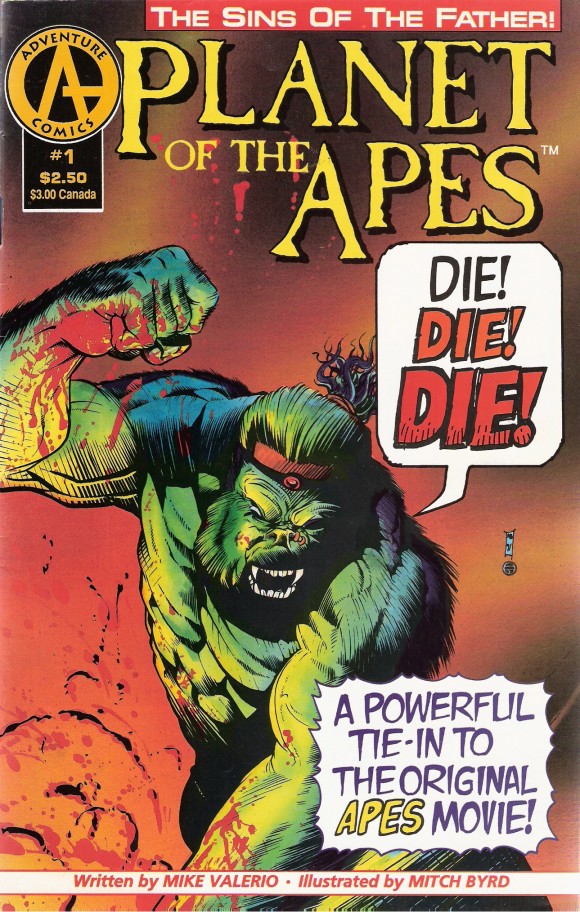
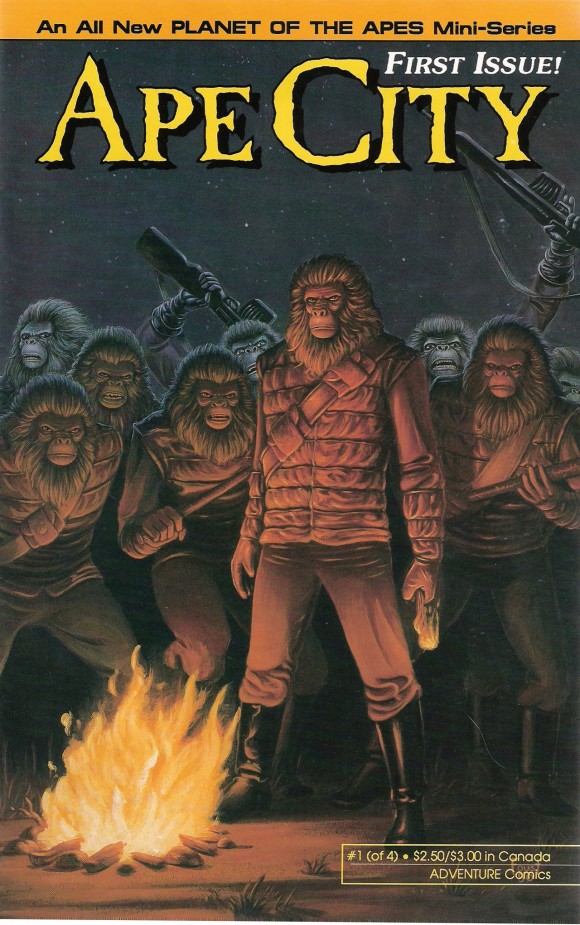
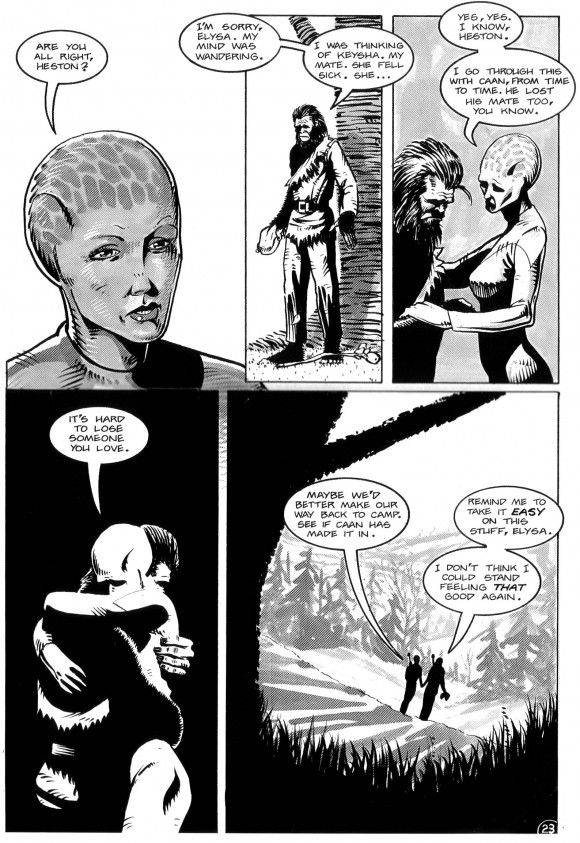
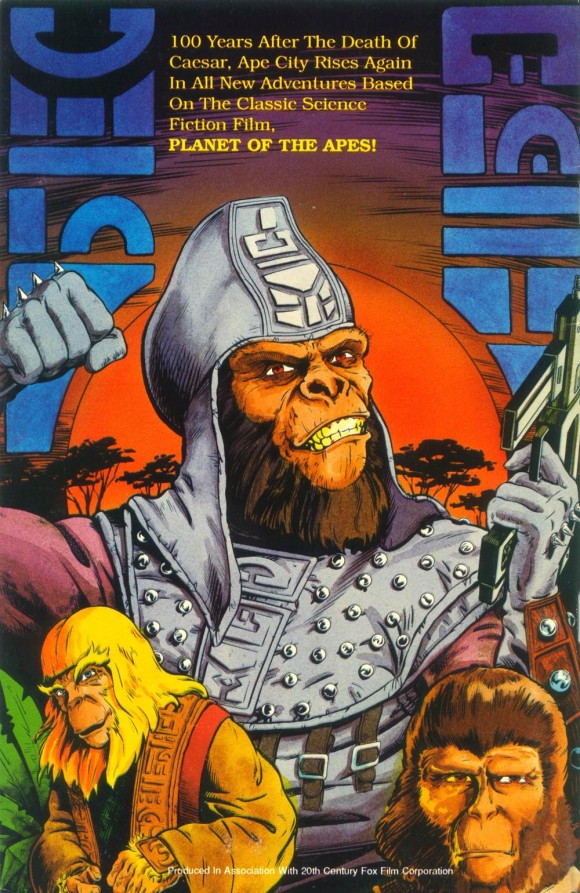
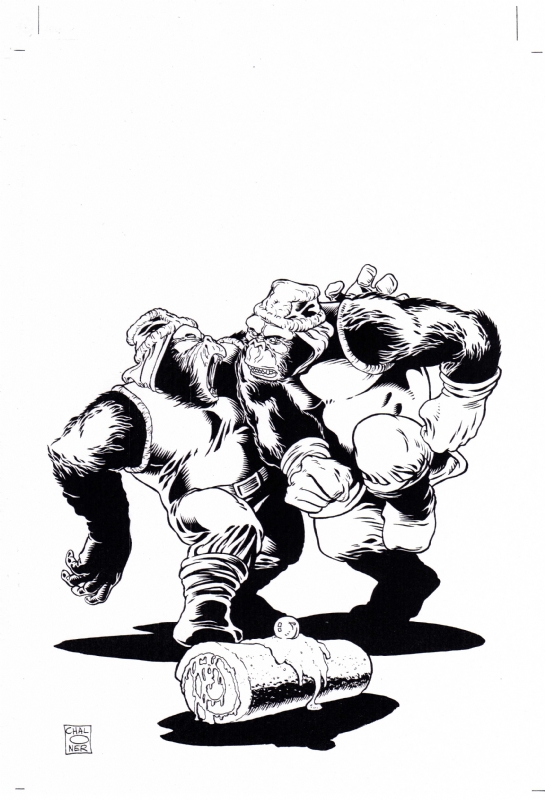
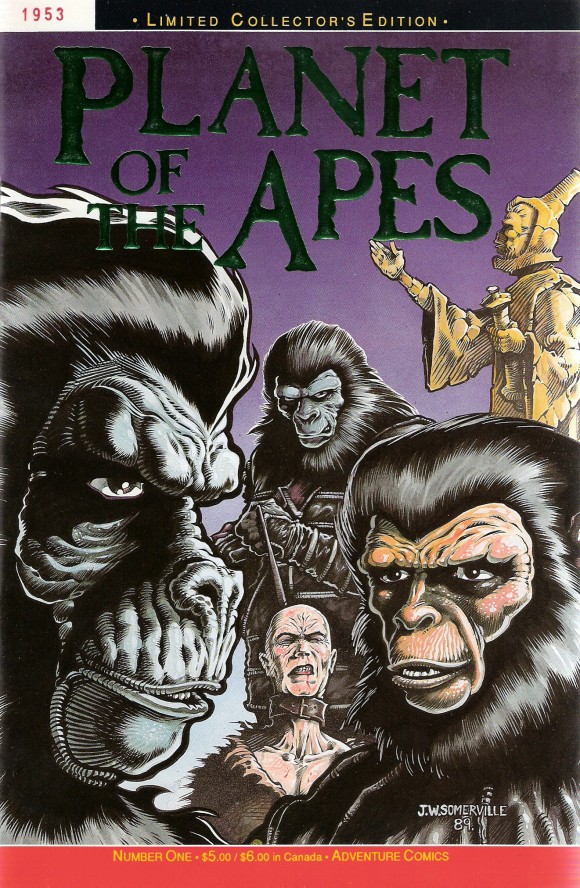
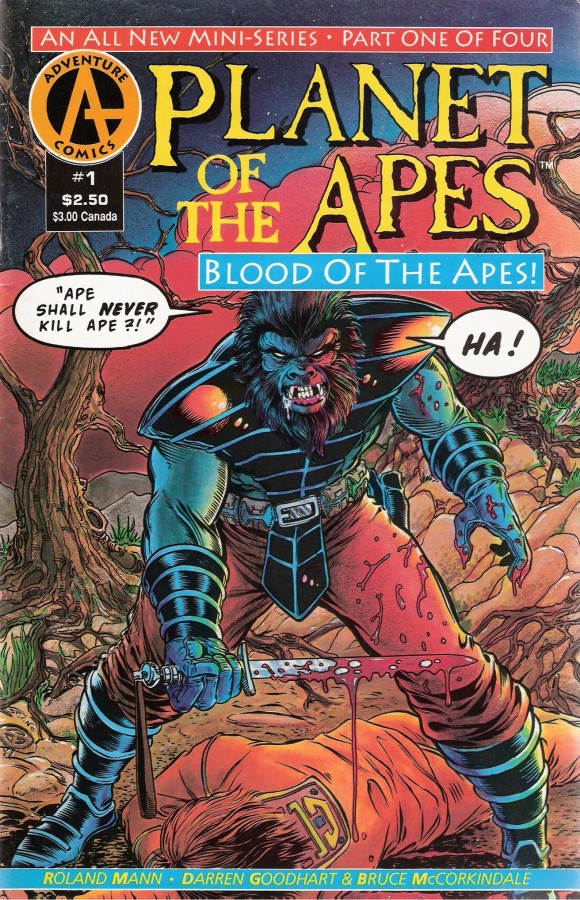
Trackbacks/Pingbacks